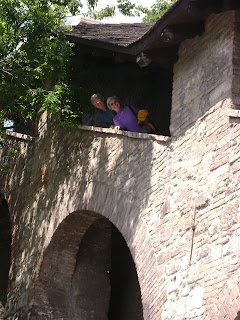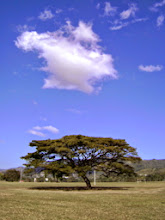 Arrived in Finland on Monday after happily uneventful flights from Ulaanbaatar. No pony trekking or camping though, like in the Monty Python song
Arrived in Finland on Monday after happily uneventful flights from Ulaanbaatar. No pony trekking or camping though, like in the Monty Python song.
I had to be in Budapest by Friday, and there was no time to mess around. It was a beautiful sunny afternoon, apparently the first really summery day this year, and the whole population was out in the parks around Helsinki. There are a lot of them - parks that is - and after Mongolia I was amazed by how green everything was. I stayed in the Design District, but pretty much everything was closed by the time I finished my laundry and was free to walk around. It is a pretty city, at least in the sunshine, with trams and a general vibe that reminded me a lot of Geneva.

The next morning I took a 2 hour ferry ride across the Gulf of Finland, entirely in the fog, to Tallinn, Estonia. I was planning to head straight south, but when I saw how charming it is I decided to stay the night. That the last bus of the day had already left helped with my decision. The 13th century old town of Tallinn is a UNESCO world heritage site, and about as picturesque as you can imagine. I had a delightful afternoon wandering around, window shopping. With no money left and no room in my backpack, it wasn't hard to keep from buying stuff.

The next morning was Wednesday, so I had to high-tail it out. I caught a bus to Riga, Latvia (that's the middle one - I finally figured out how to remember which is which: they go alphabetically from the north - Estonia, Latvia, Lithuania. Piece of cake!) where I had a little over an hour to wander around the market near the central bus station. Unfortunately, after I changed my last remaining estonian kroon - abbreviated to EEK, :0) - to Latvian Lati, I was left with not quite enough cash to check my backpack. I was back in the station with my 13kg pack on the bench next to me in plenty of time for my connecting bus to Vilnius.

We arrived at the bus station in Vilnius at around 9pm. I had an hour again before my next bus and it was still light but didn't seem like the best part of town so I didn't venture out at all. The supermarket was about the only thing open in the station, but it was pretty nice and I got a decent dinner there. There was a bookie open too, which isn't so unusual, but with a West Ham banner?!
The bus from Vilnius arrived in Warsaw at 6am on Thursday morning. I booked my overnight train to Budapest, changed money yet again (Lesson: skeptics be damned, the Euro rocks!), then had just 14 hours to kill before it left. Apparently the old town of Warsaw is quite beautiful, but I only found that out afterward. The tourist information center still wasn't open, so I set out to look around with no idea where I was going, or what to see.

As usual, I saw lots of interesting things, though not necessarily what I would have planned. Walking through the gardens in the neighborhoods near the station, I came across what I think is an old water treatment facility complete with art deco relief carved above the entrance (pictured). I also visited a couple of churches, and snoozed in one of them during organ practice - it had been a long night.

In the afternoon I saw the marker (pictured) for the edge of the Warsaw Ghetto during the Nazi occupation. There's a pillar marking the corner and a plaque with some information, simple but moving. I didn't realize the uprising and demolition happened in early 1943 - seems like so long before the end of the war.
The only museum I came across was the Muzeum Techniki, but that was a gem. It's an old-fashioned museum with a delightfully eclectic collection. There are old Polish motorbikes, computer models going back to punch card days, prehistoric washing machines, and handmade models tracing the history of metallurgy with the model builder's name included. I loved it. .
 I've been back in Grilly for a month now, and I never did finish trimming the lilacs or going through all the accu- mulated stuff I brought back after six years in Manchester. Still, tomorrow I'm back off to the sunny North. Just in time for the Germany-England World Cup face-off - should be entertaining!
I've been back in Grilly for a month now, and I never did finish trimming the lilacs or going through all the accu- mulated stuff I brought back after six years in Manchester. Still, tomorrow I'm back off to the sunny North. Just in time for the Germany-England World Cup face-off - should be entertaining!









































 Our guides were great though, pictured having a well deserved
Our guides were great though, pictured having a well deserved 







